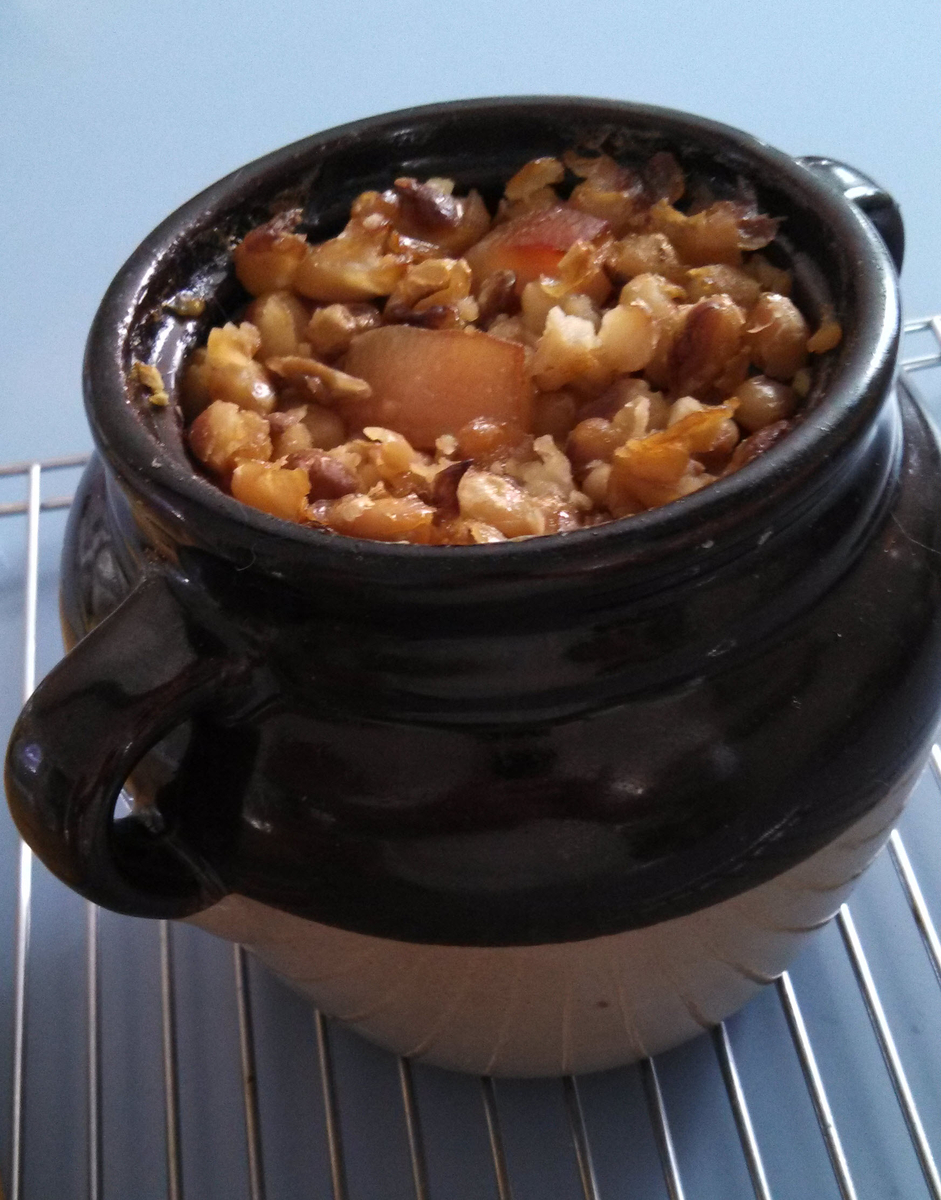
Beans are one of the Three Sisters, the trio of local foods that supported the Pilgrims and other early settlers. Thanks to their hardiness, easy cultivation, and excellent storability, beans soon became a core component of colonial New England cuisine. In fact, beans became so identified with New England that Boston became popularly referred to as Beantown.
Beans are a climbing plant. Today if you grow beans in your garden, you probably let them climb a beanpole. The Native Americans had a clever way to save space in (and dig less of) that stony New England soil: they also grew corn, and used the cornstalks as beanpoles.
You can find a lot of interesting information about beans in this article from the Maine Folklife Center at the University of Maine. The beans part starts in the fourth paragraph and continues to the end of the page.
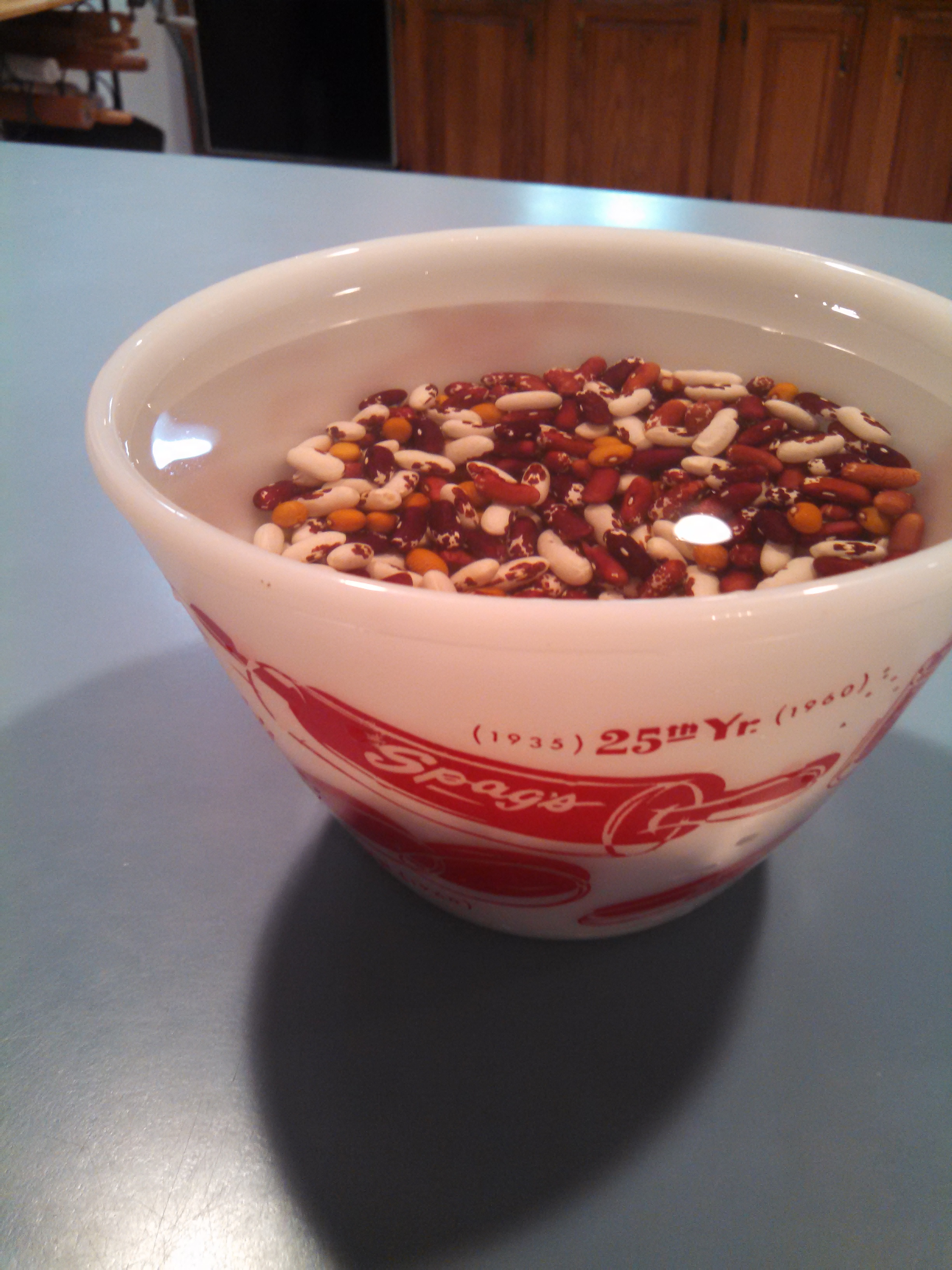
Fresh green beans can be steamed right from the garden, of course, but the great value of beans is their ability to be dried, stored and transported over primitive roads with low risk of spoilage.
Dried beans can be prepared in many ways, but pretty much all recipes require that they be soaked and then boiled. Every cookbook includes a shortcut to use in case you forgot to soak the beans overnight, but in my experience they cook for so long that I am planning ahead anyway, so I always soak overnight in plenty of unsalted cold water and then boil gently until the skins peel back when you blow gently on the cooked bean.
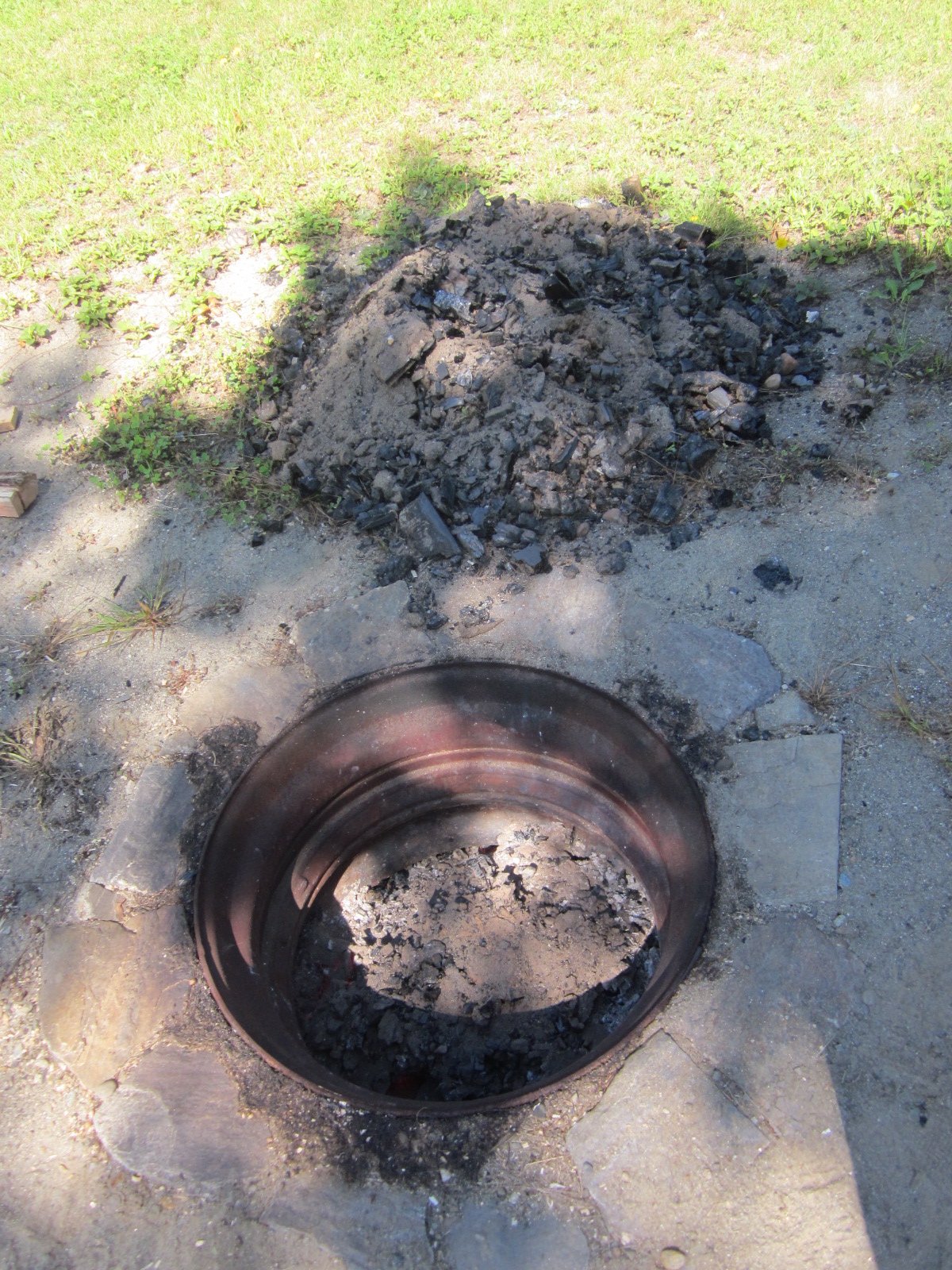
In Colonial New England, Baked Beans were found to come out particularly well when simmered slowly in a flavorful liquid in a pot with a narrow top as shown above. They could be cooked on Saturday and left among the coals in the fireplace so they would still be hot on Sunday morning when labor was to be minimized in favor of prayer. The same slow cooking principle was adapted to the bean-hole cooking in Maine lumbercamps in which a really big beanpot is buried in a layer of ash surrounded by hot coals, as shown here. I sampled these at the Common Ground Fair in Union, Maine.
 There are many varieties of beans local to New England. Most of them are unknown outside of Maine today.
There are many varieties of beans local to New England. Most of them are unknown outside of Maine today.
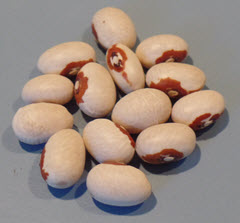
The differences between them are subtle but noticeable, in terms of how they cook, how they absorb flavor, their texture, and of course how they look. There are a number of varieties in Maine, some popular in one region, others elsewhere. The Yellow-Eye Beans shown here are a long-time favorite throughout New England. The Yellow-Eye is the most popular variety in Maine, but my mother-in-law from Upton, MA swore by them.
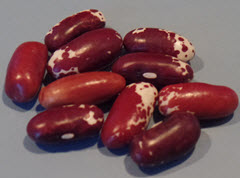
Richmond's favorite is the Jacob's Cattle Bean, one of the more commonly-available heirloom varieties. Richmond uses them in his Boston Baked Beans, the old Fannie Farmer recipe. These large-ish beans are available from the State of Maine brand at Hannaford's Supermarkets throughout the state, and at the excellent Bow Street Market in Freeport.
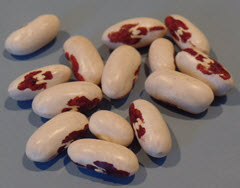
My favorite until this year was the Soldier Bean, also available in the State of Maine brand at the same places that sell the Jacob's Cattle. Their lighter color makes them attractive in some dishes. I used these in my colonial-style recipes like Tavern Baked Beef and Beans.
The Yellow-Eye, Jacob's Cattle, and Soldier Beans are the most popular heirloom varieties, and the easiest to find after the ubiquitous Navy Beans and Kidney Beans popular throughout the USA.
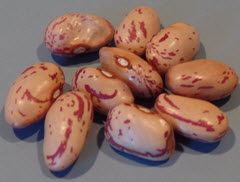
Cranberry Beans have nohing to do with cranberries, except that the streaks of color on the cramy-colored base is somewhat reminiscent of those tart little fruits. The flavor is mild and it seems to work with the few recipes that I have tried. The batch that I got did not cook up as nicely as the other beans that I had, and I have not seen many recipes or much discussion of them, but they are about as available as the others from the State of Maine brand.
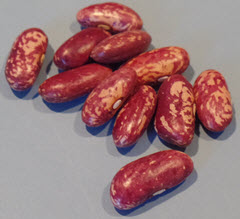
I mentioned that the Soldier Beans were my favorite until this year. While researching this article, I found a stash of King of the Early Beans at the John Edwards Market in Ellsworth, Maine. I bought a pound for the sake of completeness, but when I cooked them up, Lorna and I both exclaimed that they were the best we'd had. They're another largish bean, but they cook up beautifully and their flavor was perfect in the vegetarian Ginger Baked Beans that she likes in the winter. I found more King of the Earlys just yesterday at the Blue Hill Coop in Blue Hill, about 20 minutes SW of Ellsworth.
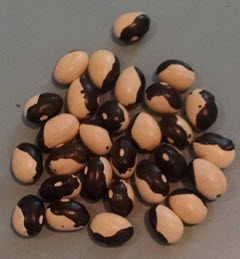
Also in that local-beans display at the John Edwards Market I found these cute black-and-white Calypso Beans.
I soaked some overnight and then boiled them for cooking in the usual way, and they lost their color in the pot. I have not cooked these into a proper recipe yet, but they sure look great in the glass apothecary jar on my bakers' rack!
(Actually, after I had bought all these varieties of beans and put them in those glass containers, they looked so darned cute that I was reluctant to cook them. I solved part of the problem by displacing some of the remaining beans in the jar with an upside-down glass tumbler so the container still looked full!)
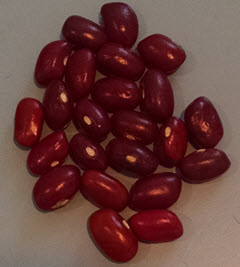
I found these handsome garnet-colored Low's Champion Beans in the same local beans display rack at the John Edwards Market. I love the color of them, but these, too, lost their color in the pot.
I have not seen these or the Calypso Beans anywhere else, and I have seen very little written about them. I do not know if they are authentic New England heirloom varieties, or simply attractive beans brought in from somwhere else. They are certainly grown locally, but if your interest is in the old Yankee foodways, these are probably not your best bet.
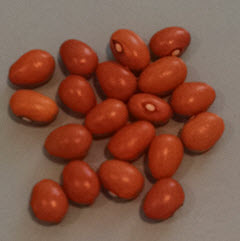
The rarest authentic New England beans that I have found are the Marifax Beans (also spelled Marafax) of far downeast Maine. These are a small, pretty butterscotch-colored variety that is very popular away downeast past Ellsworth. I got some in Machias at the quirky and wonderful Machias Hardware Store, which also stocks flour and bulk spices among other dry goods. they do mail-order, in case Machias is too far for you to drive for beans.
You can find a little more information about these varieties and order seed from the Vermont Bean Seed Company and you can get more information from the Heritage Harvest Seed Company but they ship only to Canada. The heirloom varieties on those sites are not necessarily New England varieties.
You can find a variety of recipes for baked beans on this site at Baked Beans. Here is also a quaint little book from the Maine Department of Agriculture full of quirky recipes. You'll want to download it because it loads very slowly online.

Comments